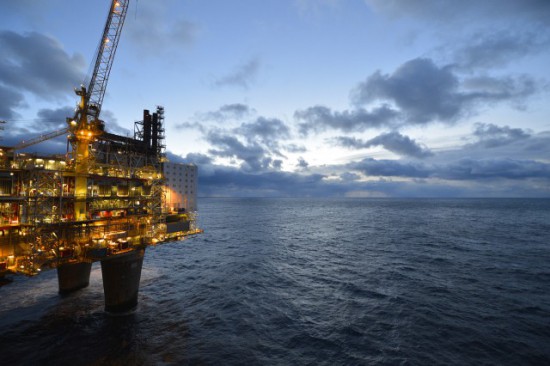2015 has been an historic year for oil markets, one that few will forget. At the beginning of the year, crude oil was well on its way to the lowest point since the financial crisis, dropping into the $40s in January. Prices bounced around, rebounded into the $60s by early summer, and then declined again for the rest of the year. As we close the books on 2015, crude oil is hovering just above an 11-year low point.
Here’s a quick review of some of the key developments from 2015 oilprice.com:
1. Ballooning inventories. U.S. oil inventory levels became a closely watched metric in 2015, as it provided tangible evidence that the world was awash in oil. Oil storage topped off at an 80-year high in April at 490 million barrels. Stocks were drawn down throughout the summer, but began rising again in the fall, once again hitting 490 million barrels in December. Inventories remain high throughout the world, and will need to be worked through before we see a substantial rebound in prices.
2. Rising OPEC production. OPEC kicked the oil price rout into overdrive in November 2014. Since then the cartel’s output has climbed by over 1 million barrels per day. Increases in output were seen in mainly Iraq (+900,000 – 1 million barrels per day) and Saudi Arabia (+600,000 bpd). The latest OPEC meeting sparked another oil price downturn as it shed its production target. With Iran set to return to the oil markets, OPEC’s production could continue to rise into 2016.
3. Faltering Chinese economy. China has been the principle driver of oil demand growth over the past decade. But the cracks in China’s economy became more visible in 2015. GDP growth is slowing, and a summer stock market meltdown spread fear of global financial instability. China’s coal and gas demand ground to a halt, spreading financial damage throughout those industries. As China’s white-hot growth slows, 2015 saw the beginning of a baton-passing. In terms of absolute figures, India pales in comparison to China’s demand for all types of energy. But India’s growth rates are set to vastly exceed China’s in the coming years, and we saw the beginning of that transition this year.
4. Rising Debt. The oil and gas industry has depended on debt to underwrite the shale drilling boom over the past five years. But debt started to pile up in 2015 as oil prices crashed. Oil majors raised a record level of debt – $31 billion – in the first two months of the year. While they can handle the burden, smaller companies are struggling under the weight of their rising debt loads. The junk bond market was dragged down in 2015 because of distressed oil and gas companies. The problem has only grown worse as time has passed. The default and bankruptcy rate rose in 2015, but everyone should expect more financial distress as we head into 2016.
5. Spending Cuts. To deal with mounting debt, the industry has cut to the bone. Spending on exploration and production fell by $250 billion this year compared to 2014. That will help companies deal with all of the red ink in the near-term, but it also means dramatically lower supply growth in the years ahead. More spending cuts could be coming – Shell just announced it would cut 2016 spending by $2 billion.
6. Falling U.S. output. U.S. oil production is perhaps the most-watched figure in terms of market analysts trying to gauge when the rebound will come. Production has declined from a peak of 9.6 million barrels per day (mb/d) in April, to 9.3 mb/d in September, although weekly estimates suggest output is somewhere around 9.1-9.2 mb/d currently. The shale boom is over, but production has not fallen fast enough to warrant a rebound in prices. More declines should be expected throughout 2016, but a key question remains: how far and how fast?
7. Currency volatility. One of the side effects of the oil price crash is the deterioration of the economies of oil-producing countries. That has sent currencies of commodity exporters into a tailspin. The currencies of Colombia, Mexico, Brazil, Russia, South Africa, Malaysia, Indonesia, Canada, and others, lost significant value. Kazakhstan and Azerbaijan were forced off their pegs. China also devalued. The pegs of Saudi Arabia and Nigeria are under pressure, as are others. These currencies could bounce back if oil prices increase, but for now, volatility reigns.
8. Fed rate hike. The Fed recently raised interest rates for the first time in seven years. The hike was modest, so it shouldn’t present a massive threat to the oil industry. However, it adds a bit of pressure, raising the cost of capital and strengthening the U.S. dollar, which can push down oil prices. The Fed is expected to hike rates more in 2016, raising further concerns for oil and gas.
9. U.S. oil exports. A 40-year ban on oil exports was tossed out the window in December. The prospect of an easing domestic glut of oil supply caused the WTI-Brent spread to vanish. As such, little actual exports are expected to be forthcoming. But the policy change was significant, and could eventually result in the U.S. becoming a major exporter.
10. Turning point? Readers would be hard-pressed to find an analyst that accurately predicted that oil markets would remain depressed throughout 2015. At the start of the year, almost no one expected we would be closing out 2015 with oil prices lower than they were in January. The pain will continue into 2016, but with a massive cut back in spending and falling production in the U.S., the supply/demand balance is expected to sort itself out, if not in the near-term, at some point late next year. With oil prices, in the mid-$30s per barrel, surely we are at the bottom?

